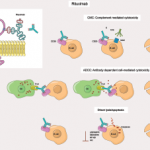A patient Zachary Wallace, MD, MSc, met during his third year of medical school at Georgetown University helped lead him to his passion for rheumatology. He was completing a clinical rotation in medicine, and the experience made rheumatologic disease tangible for him. “She had lupus, and I became interested in her case,” he says. Later,…








